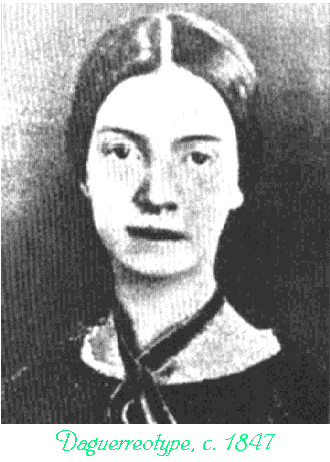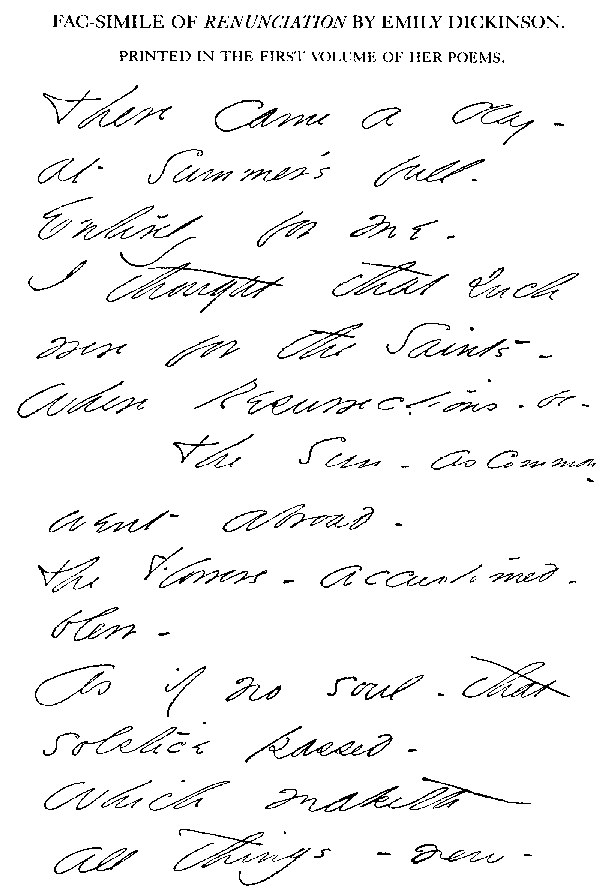
(Sorry--I've been getting a lot of SPAM lately.
Please type the address into the "To:" line of an email message,
with no spaces. And type the other thing into the "Subject:" line.)
Most people tend to have shape or form on their minds when they think of poetry. They expect to see relatively short lines of text, set well in from the left edge of the page, aligned on the left, though often with a regular pattern of indentations, and arranged in groups, like the stanzas of song lyrics. (They probably also expect to find rhyme and one of the four traditional rhythms, but I'd rather not worry about those things right now.).
It's true that most poems have been so formed. There seems to be something important about the visual impression of sentences broken up into lines, and the line breaks seem to affect the reader's eye in mysterious ways.
But form alone doesn't make poetry of words and sentences--though it can make verse. Arranging a work of philosophy or psychology or mathematics in the shape of a poem might make it verse, but won't make it poetry. Contrary to the popular perception, verse is neither necessary, nor sufficient for poetry. Other things are needed.
One of those other things is sound. Even a great poem on a page isn't poetry. You have to get it off the page and into the air to make it poetry. You have to say it to make it poetry.
But it has to be spoken RIGHT--or else it comes alive as a monster and destroys the village and eats the babies!
Here's an example of a poem that can become a monster. This used to be quite a popular poem. It was included in lots of schoolbooks until the middle of the twentieth century. Millions of children learned it by heart. But for most of us who live in America today, it's a very dead poem. Let's see it we can breathe some life back into it. Here it is:

I encountered this poem for the first time in the fifth grade. We
must have been studying prosody at that time--at any rate, I
remember the teacher saying that it was in iambic tetrameter and
making us emphasize the rhythm heavily as we read it aloud. It
sounded more or less like this: My
fifth-grade reading of the poem.
I don't know how anyone could miss the iambic tetrameter in that reading.
But whoa! I don't know how anyone could understand the poem, reading it that way!
Let's consider the SUBJECT of the poem. What's the "it" in it? What did she like to see lap the miles? Well, Dickinson didn't give the poem a title, but she was probably thinking of something such as "Iron Horse."
As I said, this is a dead poem for most Americans today, but in Dickinson's time, the iron horse was THE thing that fired people's imaginations. (By the way, I hope you'll forgive me these lame puns.) It was more than transportation; it transported people! Just imagine the effect it must have had on Dickinson. She was born the same year that the first commercial locomotives began running in America. About five years after she wrote this poem, the transcontinental railroad line was completed, and you could go all the way from New York to San Francisco in just two weeks--drawn by an iron horse!
Half a century after she wrote this poem, THE thing was the horseless carriage. What is it today? The World Wide Web!
But in Dickinson's life, it was the iron horse.
The term "iron horse" is a metaphor, of course. Until the steam
engine, horsepower came from--duh--horses, and carriages and
freight wagons were drawn by real, live horsepower. So it was
natural to think of a steam locomotive in horse terms.
(Steam. Keep that in mind. SSSteam esscaping
under cccertain pressssure.)
But how do iron horses sound? CERTAINLY not ta-DUM ta-DUM ta-DUM ta-DUM! Real horses don't either. They have several gaits--rhythms--but the best known is probably the gallop, which (as anyone familiar with The Lone Ranger or "The William Tell Overture" knows) goes: ta-da-DUM ta-da-DUM ta-da-DUM DUM DUM. (Q: Where does the Lone Ranger take his garbage? A: To the dump, to the dump, to the dump, dump, dump!)
And how does an iron horse go?
What--you've never heard an iron horse?
Aw, shoot!Iron horse with fire'n his belly, rarin' ta go. Woo! Woooo-weee! Ya can hear his digestion, fer cryin' out loud! Ya can hear as the whee-uls run over the joints in the track.
Clickety-clack, clickety-clack, clickety-clack, clickety-clack...
The wheels are singin' to the railroad track,Listen to that train whistling [The Kingston Trio, "Freight Train"]
The wheels are singin' to the railroad track,
"And if you go you can't come back,
If you go you can't come back,
If you goooooooo
you can't
come
back."
My grandfather grew up on a farm outside Cleveland, Ohio, and he loved the trains. As a young man he rode one into the city every morning to dental school. When I was very little, he and my grandmother lived about half a mile from the main rail line east to New York and west to Chicago and California. There were still steam engines on that line, and at night you could hear the whistles and when the wind was right, the chuffing of the steam as it blasted out the stacks of the big locomotives. When the driving wheels lost traction starting up the steady chuff-chuff-chuff changed suddenly to CH-CH-CH-ch--ch---ch----chuff. chuff.
My grandfather used to take me to the station sometimes, just to see the Nickel Plate Special come in. He'd buy a pack of Black Jack gum and we'd go out on the platform. Big black engine with shiny silver-colored trim. Black smoke. Sudden unexpected jets of steam spurting sideways from hidden valves--PSHHHH--lifting the skirts of the prettiest girls, the engineer and fireman high up in the cab, grinning, waving. Huge heavy rods connecting driving wheels the height of a man.
He tacked sandpaper to two blocks of wood so I could make the sound myself: SHHHH shhhh shhhh shhhh SHHHH shhhh shhhh shhhh...
Okay, enough reminiscing. Let's try that old, dead iron horse poem again and see if it still has some fire in it. Can you hear it now? Hear it now.
All right, YOU try it. Read it
aloud. A. LOUD. LOUD! Make it
breathe! Like a hoarse horse.
One of the remarkable things about this poem is that it has two rhythms. The basic, underlying rhythm--the one most people find right away--is iambic tetrameter. But on top of it is that four-beat CHOO-choo-choo-choo rhythm that fits the sense of the poem. I like to think of the poem this way, just as I like to think of it as using the two-things-at-once iron horse metaphor.
Ah, well, even though we've breathed a little life into this
poem, it isn't really a viable poem for our time.
The iron horse
steam train isn't completely extinct, true, but in North America
it's certainly an endangered species. You find them only in zoos
here. (They're alive and well in China, though, where thousands of
them haul most of the freight and passengers for one-fifth the
world's population.) [That was so in 1995. Not any
more. In a few years the steam trains in China will all have
been electrocuted.]
Okay, that's a bit about sound in poetry. There's a lot more one
could say on the subject, of course, but... another time.
P.S. In case you're curious, here's what Dickinson's handwriting looked like. (It's the first page of a different poem. I haven't found the manuscript of this iron horse poem.)

--Don Maxwell
